Purchased for $1.515 million in September of 2015, the upgraded 1,400-square-foot Yerba Buena Loft unit #523 at 855 Folsom Street, which was designed by Stanley Saitowitz and is “one of the area’s most sought after addresses,” is outfitted with two bedrooms, two baths, a private 400-square-foot south facing terrace and a deeded parking space in the garage.
Two weeks ago the unit returned to the market priced at $1.595 million, a resale at which would have represented total appreciation of 5.3 percent for the unit since the third quarter of 2015 on an apples-to-apples basis. The list price for 855 Folsom Street #523 has now been adjusted down to $1.495 million. And yes, a sale at $1.5 million would be considered to be “over asking” according to all industry stats and aggregate reports.
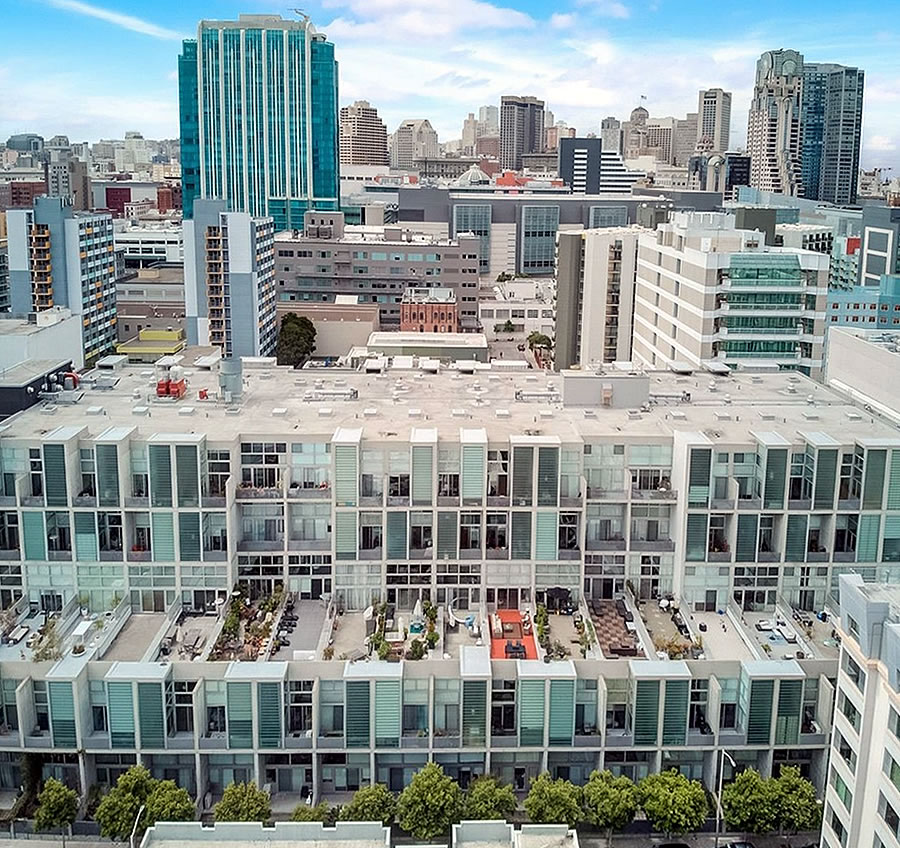
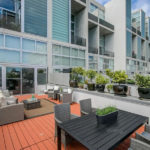

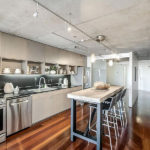




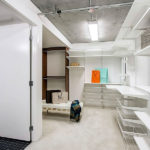
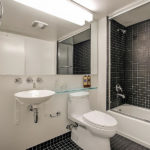
And now another round of tariffs and deficit spending out of DC. Dark clouds are gathering over the economy. Not a great time to sell.
This is a great time to sell as things are only going to get worse. Get out while you still can.
What do you think is going on? There have been lots of price cuts in South Beach and Yerba Buena lately, not just this building.
Well, there’s this: Reductions on the Rise as the Pace of Sales Slows in San Francisco (while Bay Area Home Sales and Median Price Continue to Drop and Indexed Returns for Bay Area Homes [are] Nearing Negative Territory).
I think what’s happening is that the president is making policy decisions which are damaging the economy, which will drive down demand. I don’t think it’s complicated.
And yet sales volumes in San Francisco (you know, actual demand) have been effectively trending down since 2015, while inventory levels have been trending up and the early cracks in the market have been spreading, year-over-year.
And yet pricing, according to some commentators, Bay Area median prices continued to rise from 2015 to 2018.
And while the market in San Francisco had already started to turn back in 2005, the “median” didn’t really peak until 2008. Of course, changes in the “median sale price” aren’t the same thing as changes in value and it helps to understand that the median can continue to climb after the leading indicators have turned.
And prices in SF started dropping in 2008, just one year after the stock market started to collapse. I wonder if stock market prices are also a useful leading indicator.
Actually, prices in San Francisco started dropping in 2006.
But there were lot of people who remained in denial, or simply didn’t understand the dynamics at hand, until it was too late (i.e., circa 2008).
Does your own link say prices peaked in some segments in 2006 and in others in 2008? And the stock market peaked in 2007, right?
Give us a second to check. Yep, 2006 does precede 2007, which would make it hard for a 2007 event to be a leading indicator for the 2006 turns (not to mention the volume peaks which had already occurred).
Hang on, let me check. I believe that 2007 did proceed 2008, which is when some commentators claimed the median peaked.
And it’s hard to argue that the collapsing stock market did not have an effect on the housing market, but maybe there’s a rationale for that logic too.
Is it at least partly that condos get “old” in South Beach/Yerba Buena, given that there are newer options like Lumina? Especially because this is “loft stye” and that has gone out of fashion? I know this would only be a part of the story. I personally have never liked the Yerba Buena lofts, but the units with exterior space are certainly the sweetest of the bunch (and the only ones I would consider living in). Personal taste, I know.
As long as they’re priced at a premium, newer developments actually tend to raise the values of surrounding, older, buildings by driving up area comps and entry points for the neighborhood.
“What do you think is going on? ”
Tesla is down 33% YOY and its chief technology officer and founder just quit. Lyft’s #2 in charge COO just quit, Uber just laid off 400 people, Nvidia is down 33% YOY, Chinese buyers evaporated, Investors aren’t buying and are selling, Boomers are selling, SF population is flat to declining.
The needs of the generations behind the boomers are far less. A boomer got married at age 23 and spent 42 years in houses and condos before retiring. Someone today gets married at 33 and spends 32 years in houses, so they need more apartments and 23% fewer houses.
ppsft in Seattle is $500 even though Amazon and Microsoft are doing very, very well. Our double prices rely on a continuous stream of rising stock prices and new issues that are higher than the price of the RSU shares issued to the employees, which were subtracted from their cash salaries to produce a total compensation amount. When, as Uber, anyone in the last 4 years subtracted $47.88 per share from their salaries, and the stock is at $41 and change before the lockup expires, they’re going to lose money and not rush out and buy houses: they won’t even get their own money back.
It’s not just here. Palo Alto Days on Market are up 92%. Cupertino Days on Market are up 79%. When stuff stops selling, prices decline.
And rate cuts? Trump wants rate cuts so he can hammer China. Every time the Fed cuts, he’ll turn around and attack China. Stocks will sell off further. So rate cuts aren’t going to save anything. Google stock is actually DOWN over the last year.
San Francisco and the BA’s population is flattening and moving to a potential decline and job growth for the region is anemic. Two key macro trends which will have a negative impact on Bay Area residential real estate prices for years to come. You note Seattle’s ppsft is close to 50% less than San Francisco’s. San Francisco’s is “artificially” high given the trend of the Bay Area becoming less significant as a populations and jobs center in coming years. Part of the extreme unaffordability of the region has been the refusal to build housing. Too little supply for too long but, as people and jobs leave the area this adjust over time.
You cannot be serious with these takes.
Absolutely serious. Add in the growing net out-migration (the “U-Haul” measure) and the fact the San Francisco now has the highest constructions costs not just in the US but the world – to name two other factors – and the future trend become even more obvious.
San Francisco’s population is still growing, of course. People leave, but the funny thing is that other people arrive.
Nobody takes anyone seriously when they play the U-Haul card How much does it cost to house a truck in SF versus Sacramento, Dave? or Texas? or Vegas? or [insert municipality with lateral industrial space here]?
And yet the U-haul data has successfully predicted the large and growing domestic out migration trend as shown by the census data. Or do you also disbelieve the census data? Maybe the NAR has population stats that contradict the census data?
Domestic out migration is a thing in Coastal California generally, yes. What is taking place with the actual population of SF though? And how does U-Haul correlate? What does the NAR have to do with the price of fish?
Coastal CA in general, Yes. But also in SF.
I said that. But it’s not even just coastal. Fresno experienced domestic out migration too. And the tonier places with less jobs, like Santa Barbara, have even starker per capita numbers. None of these things have much to do with U-Haul rates = death knells.
While this obviously isn’t the whole story with the higher end condo market the last few years, it does seem like lofts in particular have become significantly less desirable.
“what do you think is going on?”
My take: a lot of the recent socketsite articles on depreciating property values are high end condos esp the SoMa hi rises. With the high initial price per sqft and high HOA very few of them had opportunity for appreciation. My friends and colleagues buying non-luxury <$2M homes in San Francisco today are still facing stiff competition and much higher than asking price with (no price reduction, as socketsite may like to throw shade 🙂 )
Compared to peak of 2018 it's a buyer's market not a seller's market. Here's some shade to myself- I predicted this in early 2018 yet bought in June 2018 anyway.
But let's not forget that SF is still one of the most liquid and active markets in the nation. Anywhere else in the country it's normal to see 30+ DOM. In SF that's stale fish.
I’m still expecting the recent IPO cash flow (most folks can’t immediately exercise their shares) to help prop the market. The 1-1.5 mill market should be very active.
I hate to break it to you but…
“This study empirically demonstrates the positive impact of initial public offerings (IPOs) on local housing prices in California from 1993 through 2017. In the spirit of the difference-in-difference approach, we test whether hedonic price indexes increase after IPO events more for the areas around IPO firm headquarters. We use the IPO events of public filing, issuing, and lockup expiration to distinguish changes in the shareholders’ expected wealth, assessed wealth, and immediately available wealth, respectively. HPIs increase more within 10 miles of IPO headquarters than in the surrounding area by 1.0% after filing and 0.8% after issuing but approximately zero after lock-up expiration.”
And there was no lockup with Juul and Slack and that turned out to be a big nothingburger.
Quote unquote luxury real estate traded at all time high price + volume in Q2 2019. What is it supposed to look like? It doesn’t look like nothing on a chart you know.
Once again, the reported difference in “luxury market” sales between the first half of 2018 (314) and the first half of this year (329) was a total of 15 sales. And with more expensive homes on the market, more expensive homes tend to sell. And when the share of “luxury” home sales increases, it mixes the median sale price up.
Why did you feel the need to address my point, as opposed to the errant “nothingburger” point? Bizarre. Is 15 sales not nearly 5% more than a previous all time high year? Five percent is a figure you’ll tout in other contexts. It’s so odd who you address and who you do not on here.
Just to be clear, an additional 15 “luxury” sales over six months with Juul having bonused and Uber, Lyft, Pinterest and Fastly having all gone public, along with Slack in mid-June. And total recorded sales were actually down in the first half of the year.
Clear as mud. Up, yes.”Luxury” sales were up over a record setting beginning to 2018. Compare other years. They’re not close.
Are other years even close, Socketsite?
Great paper – thanks for sharing!
Withdrawn. No sale, even listed at a loss on the 2015 purchase, 4 years ago. Those 10,000 millionaires about to eat San Francisco alive must be on a diet.
UPDATE: Having failed to fetch a buyer last year, 855 Folsom Street #523 has just been re-listed anew with a further reduced list price of $1.45 million and an official “1” day on the market according to all MLS-based stats and reports.
UPDATE: Rare Yerba Buena Unit Trades Below Its 2015 Price